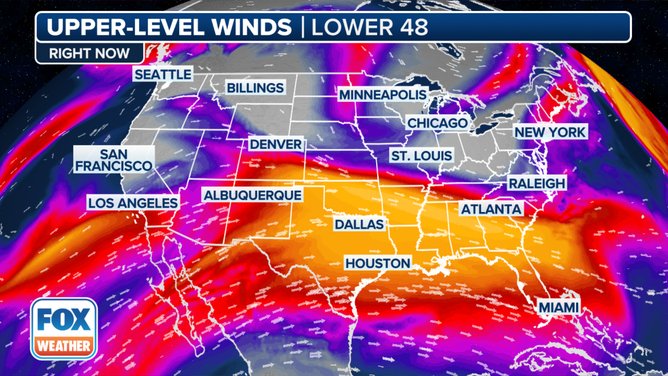High-altitude balloon being tracked over western US doesn't appear to be weather related
A Chinese spy balloon gained international attention in 2023 after it flew over Alaska and a vast stretch of the Lower 48 before being shot down by the military.
What is a weather balloon?
What does a weather balloon do exactly? Learn what a weather balloon looks like and how they collect real-time data in the sky on winds, pressure, temperatures and moisture.
PETERSON SPACE FORCE BASE, Colo. – Federal agencies tracked an unidentified balloon over the western U.S. on Friday and, according to initial observations, believe it does not threaten national security.
The North American Aerospace Defense Command (NORAD) stated it detected the small balloon at an altitude of between 43,000-45,000 ft and dispatched fighter jets to the skies over Utah to perform surveillance of the object.
According to the agency, pilots determined it was not controlled, and movements were subject to jet stream winds.
According to the FOX Forecast Center, upper-level winds would cause the balloon to drift eastward through the Rockies and over the Plains.
NEW IMAGE FROM MOON LANDER REVEALED BUT QUESTION REMAIN WHETHER WE’LL SEE PHOTOS FROM LUNAR SURFACE

Upper-level winds across the U.S. on Feb. 23, 2024.
(FOX Weather)
Due to its high altitude, the Federal Aviation Administration does not believe the balloon threatens aviation but said it will continue to monitor the airborne object.
The altitude of the latest balloon is much lower than that of a Chinese spycraft that gained international attention in 2023.
The Chinese balloon flew over a vast stretch of the Lower 48 before being shot down by U.S. military aircraft off the coast of South Carolina.
US Military shoots down suspected spy balloon off South Carolina
File: A Chinese balloon that traveled over a large chunk of the country was shot down off the coast of South Carolina on Saturday.
Unlike the most recent event, the suspected spycraft flew at an altitude of over 60,000 feet, which is greater than the level of cruising aircraft and the key layers of the atmosphere that U.S. weather balloons monitor during the winter.
Weather balloons contain a radiosonde with sensors and a transmitter that sends data back to the ground every two seconds and helps forecasters gather data for computer models.
HOW A SUSPECTED CHINESE SPY BALLOON IS DIFFERENT THAN AMERICA’S CLASSIC WEATHER BALLOON
A National Weather Service meteorologist said it did not appear that the latest balloon was part of any NOAA research project or daily observational task, as those balloons are thoroughly tracked.
The typical weather balloon is only in the sky for about 90 minutes and solely relies on wind for travel.
NORAD did not state how long it anticipated the object to remain airborne or if it was visible from the ground.

